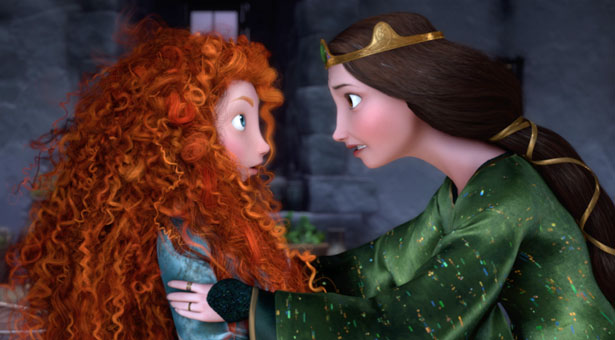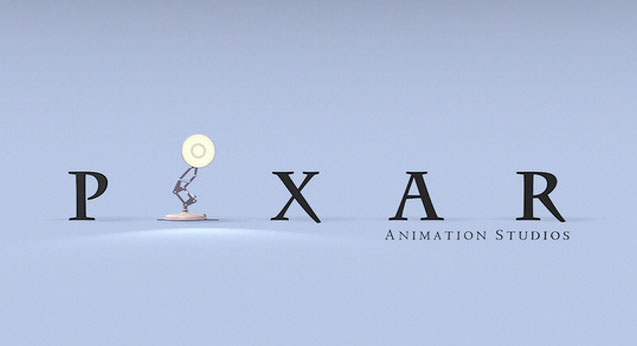When Cars 2 came
out last year, the general attitude it was greeted with from audiences and
critics alike verged on relief. After an uncommonly long streak of good (and
often great) movies, the mighty Pixar had created a stinker. More than that, it
was stinker from the hand of Pixar’s own leader John Lasseter. Though not a box
office bomb and nary a complete misfire, Cars
2 lacked creative spirit and was deservedly deemed a failure. But given the
good will that Pixar has built up over the last 15 years, and add in the fact
that the property itself wasn’t all that inspiring to start with (given that Cars was the studio’s weakest effort
before the sequel), many viewers were willing to give the studio a pass.
Fast
forward to this year. With the Cars 2
debacle in the proverbial rear view mirror, Pixar seemed poised to return to
form with a new original story following its previous two sequel releases (the
other being the universally praised—and justly so—Toy Story 3 in 2010). The film is Brave. While it fronts some of the standard elements of traditional
Disney fare—character from royalty, fairy tale story elements, etc.—Brave also bears several unique
distinctions in the Pixar canon. One of these is a rich period setting among
the gray countryside of old Scotland. For all the studio has accomplished in
digital vistas and beautifully rendered landscapes, nature had been mostly
non-existent until now. One of Brave’s
best assets is how well it captures
the look and feel of a dense wilderness of rocks and trees.
More important than the quality of
the animation, however, is the film’s focus on women. Brave tells the story of a rebellious princess named Merida (Kelly
Macdonald) and her mother (Emma Thompson). The two are at odds over how Merida
should carry herself as the kingdom’s next queen. While Merida would rather be
riding on horseback through the forest, bull’s-eyeing targets with arrows along
the way, her mother wishes that the red-haired rebel carried herself instead as
a proper woman and fulfill her duties as future queen. Brave traces the trajectory of the tumultuous relationship between
Merida and her mother, with other characters— such as the Billy Connolly-voiced
king and Merida’s three devilish little brothers—serving as comic relief. But like many
Pixar movies, Brave has a solemn
core. Separating it from other Pixar works is the plot twist it serves up
midway through. I won’t spoil it here; suffice to say that it significantly
shifts the film’s tone and direction. The result is uneven, but Brave recovers enough to gain some
momentum toward a modestly satisfying finale.
Taken on its own, Brave is enjoyable enough. But that’s
where I have a problem. “Enjoyable enough” isn’t enough. More pointedly, Brave
hews closer to the kind of modern animated movie to which Pixar has long been
the alternative. It lacks an intangible sense of patience and timing that so
many other works in the studio’s past have achieved so effortlessly. Both comedically and dramatically, the film is too eager to please. Nonetheless, directors Mark Andrews and Brenda Chapman ostensibly strive for a sublime effect but fall very short of that goal.
Before I go further, I
should admit that judging Brave
against other Pixar films is a slippery slope. After all, it would be unfair to
expect every film from the studio to have the nuance of Ratatouille, the wonderment of Up,
the forbearance of Wall-E, or the
emotional roundedness of Monsters, Inc.
And yet, to pay no heed to that heritage is unrealistic, particularly when a
film bearing the studio’s name comes across so ordinary. Perhaps if I had seen Brave without any knowledge of its
origins, I would have been more willing to recommend it. But that’s not really
the point, nor is that scenario desirable. We bring so much with us when we
watch movies, from our own implicit grasp of visual and narrative conventions,
to our knowledge and expectations regarding certain acting and filmmaking
talent. And lest we forget, we also bring our own individual life
experiences and immediate feelings of the moment.
To critique a work based on the
expectations promised by the names involved is not an entirely invalid way to
come at a movie. Art demands that we take it in and respond to it, and for
every viewer and critic, our judgments are formed based on what we bring to
each movie and how we respond to the different elements in motion. So apart from what's in the movie, we're also dealing with elements outside it. (As Martin Scorsese imparts, "Cinema is a matter of what's in the frame, and what's out.") The critic’s
job is to weigh these initial responses and contextual factors against a deeper knowledge of movies,
storytelling, and various other things that inform our responses to movies.
But let me get back to Pixar, because I think what I’ve been wrestling with in my response to the Brave is the concept of legacy, or,
specifically, how we respond to movies based on the legacies attached to them
and those who make them. In the case of Brave,
I knew little about the movie, so my frame of reference was based on the
studio’s track record. Although different filmmakers have contributed to the Pixar catalogue, there are
key similarities between the films that have since become associated with the studio's work in a more general sense. Pixar earned its untouchable reputation by
making understated yet expressive films that also happened to be commercially
slick and “family-safe.” As technology and entertainment increasingly demand
our attention and time but not our minds and imaginations, Pixar has stood as a
beacon of hope.
Which brings me back to Brave. If for no other reason, Brave merits a place in the Pixar canon
for breaking important new ground with its focus on female characters. It is
also an entertaining movie for the most part. But the fact that it fails to
take hold in any deeper way (despite promising elements and a studio pedigree)
underscores a potentially more troubling reality as Pixar is concerned. While Cars 2 showed the studio in pure cash-in
mode, Brave is a different sort of
effort; one in which the filmmakers are striving for a greatness that Pixar films so routinely achieve. And while Brave may be a better movie than Cars 2, it is arguably a greater
disappointment. It suggests that Pixar may have reached a point where it is comfortable;
where its imaginative forces have become enmeshed with financial interests of
its parent company Disney. Art and commerce have always been strange
bedfellows, but the work of Pixar has proven that the combination can yield
visionary results. If Brave is any
indication, the problem Pixar faces going forward is how it will come to terms
with its own legacy of greatness while still always pressing forward into new
creative domains.







